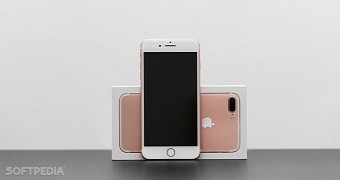A new report from Fast Company, citing a source with knowledge of the matter, revealed the fact that Apple is working hard on a new iPhone device that features rear-facing 3D laser for improved camera autofocus and augmented reality (AR).
The company already unveiled the AR capabilities of the upcoming iOS 11 mobile operating system, which Apple plans to release this fall for all supported iOS devices, and it now reportedly plans to make future iPhones much better suited for AR experiences.
The ARKit augmented reality development kit that Apple showcase during its keynote speech in early June as part of the WWDC 2017 developer conference already suggested the Cupertino company may be working on new AR iPhone components, and now it turns out to be true.
According to sources, the rumored iPhone 8 smartphone could use a VCSEL (Vertical-Cavity Surface-Emitting Laser) system that's integrated into the rear camera, enabling better depth detection for AR apps, as well as far more improved autofocus for photography.
"The VSCEL laser system is probably intended for the 10th anniversary iPhone (which may be called the iPhone 8 or the iPhone Pro or, hopefully, the iPhone X). Whether the sensor will be included in that phone, or a 2018 iPhone, depends on the progress the Apple engineers make in integrating the laser system into the phone, our source says."
Apple's spokesperson refused to comment on the new AR iPhone features
It would appear that the Fast Company tried to get in touch with an Apple spokesperson, who refused to comment on the new AR iPhone features, a fact that makes the rumor more credible. In fact, we have no reason to doubt the idea of Apple working on a rear-facing 3D laser for its next iPhone devices because of the existence of ARKit.
The report also says that the VCSEL laser system that Apple plans to integrate into iPhone 8 will cost only $2 USD per device, and it's capable of generating a TOF (Time of Flight) measurement by calculating the distance the light travels from the laser to the target and back. The 3D laser system consists of a source (a.k.a. the VCSEL laser), a processor, a sensor, and a lens.

 14 DAY TRIAL //
14 DAY TRIAL //